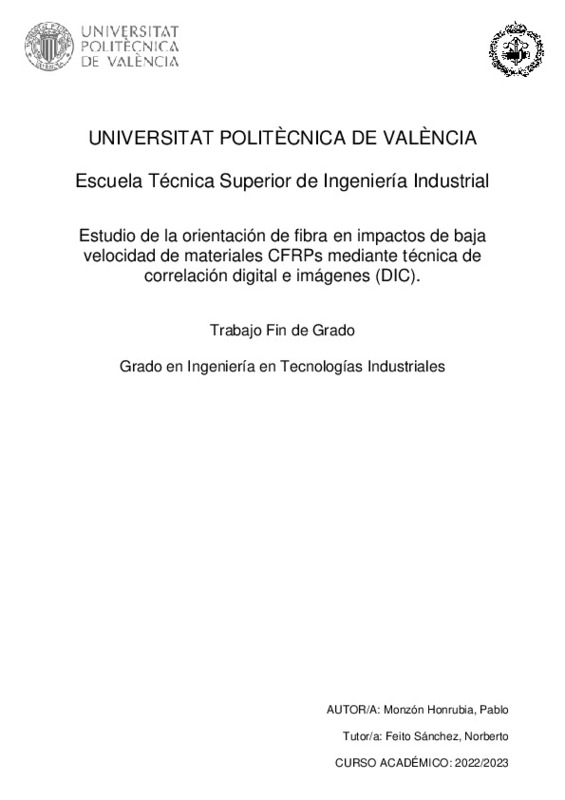JavaScript is disabled for your browser. Some features of this site may not work without it.
Buscar en RiuNet
Listar
Mi cuenta
Estadísticas
Ayuda RiuNet
Admin. UPV
Estudio de la orientación de fibra en impactos de baja velocidad de materiales CFRPs mediante técnica de correlación digital e imágenes (DIC)
Mostrar el registro completo del ítem
Monzón Honrubia, P. (2023). Estudio de la orientación de fibra en impactos de baja velocidad de materiales CFRPs mediante técnica de correlación digital e imágenes (DIC). Universitat Politècnica de València. http://hdl.handle.net/10251/197889
Por favor, use este identificador para citar o enlazar este ítem: http://hdl.handle.net/10251/197889
Ficheros en el ítem
Metadatos del ítem
| Título: | Estudio de la orientación de fibra en impactos de baja velocidad de materiales CFRPs mediante técnica de correlación digital e imágenes (DIC) | |||
| Otro titulo: |
|
|||
| Autor: | Monzón Honrubia, Pablo | |||
| Director(es): | ||||
| Entidad UPV: |
|
|||
| Fecha acto/lectura: |
|
|||
| Resumen: |
[ES] El objetivo de este trabajo es analizar el comportamiento a impacto de un material compuesto de fibra de carbono con matriz epoxi mediante la metodología DIC (Digital Imagen Correlation). Para llevar a cabo el análisis ...[+]
[EN] The aim of this work is to analyse the impact behaviour of a carbon fibre composite material with an epoxy matrix using the DIC (Digital Image Correlation) methodology. In order to carry out the analysis, a Charpy ...[+]
|
|||
| Palabras clave: |
|
|||
| Derechos de uso: | Reserva de todos los derechos | |||
| Editorial: |
|
|||
| Titulación: |
|
|||
| Tipo: |
|
Localización
recommendations
Este ítem aparece en la(s) siguiente(s) colección(ones)
-
ETSII - Trabajos académicos [10404]
Escuela Técnica Superior de Ingenieros Industriales







